eSIM has been gaining more traction in the consumer market, especially since the eSIM-only iPhone release back in September 2022. Nonetheless, the adoption rate is growing at a slower-than-expected pace. According to GSMA, consumer awareness of eSIM in 2023 climbed to 36%, compared to less than 30% in 2022. While it’s an improvement, this is still a massive barrier to adoption. Why is that?
The answer isn’t as straightforward as it seems. There are plenty of reasons that contribute to the low eSIM adoption rate. One of the reasons is the low eSIM-capable devices promotion by OEMs (original equipment manufacturers) and operators. Another is the low eSIM promotion by Service Providers (SPs). Mainly due to the fear of customer churn since eSIM enables customers to easily switch from one provider to another. Lastly, the low number and high prices of eSIM-capable smartphones. In this article, we’ll focus on the latter reason.
TL;DR
- eSIM has been gaining more traction in the consumer market, especially since the eSIM-only iPhone release back in September 2022.
- The total number of eSIM-capable smartphones has risen to 199 devices in October 2024.
- Our Top 5 most affordable eSIM-compatible smartphones in 2024
- iPhone SE
- Fairphone 4 With E/OS
- Pixel 7a
- Samsung Galazy A35 5G
- Motorola Moto G55 5G
- The most affordable eSIM-capable smartphone in October 2024 is the Motorola Moto G55 5G.
How It Started
When eSIM was introduced to the consumer market, eSIM-enabled smartphones were restricted to flagship lines by brands like Samsung, Apple and Google. More OEMs followed suit and jumped on the bandwagon, similarly restricting eSIM capability to their own flagship devices. These devices tend to be the most expensive options from any OEM, contributing to low accessibility for consumers.
Around 2020, the most affordable eSIM smartphone was priced at around $400, and there were only 4 eSIM smartphones to choose from. Fast-forward to October 2024, the most affordable smartphone is now priced around $200, and the total number of eSIM-capable smartphones has risen to 199.
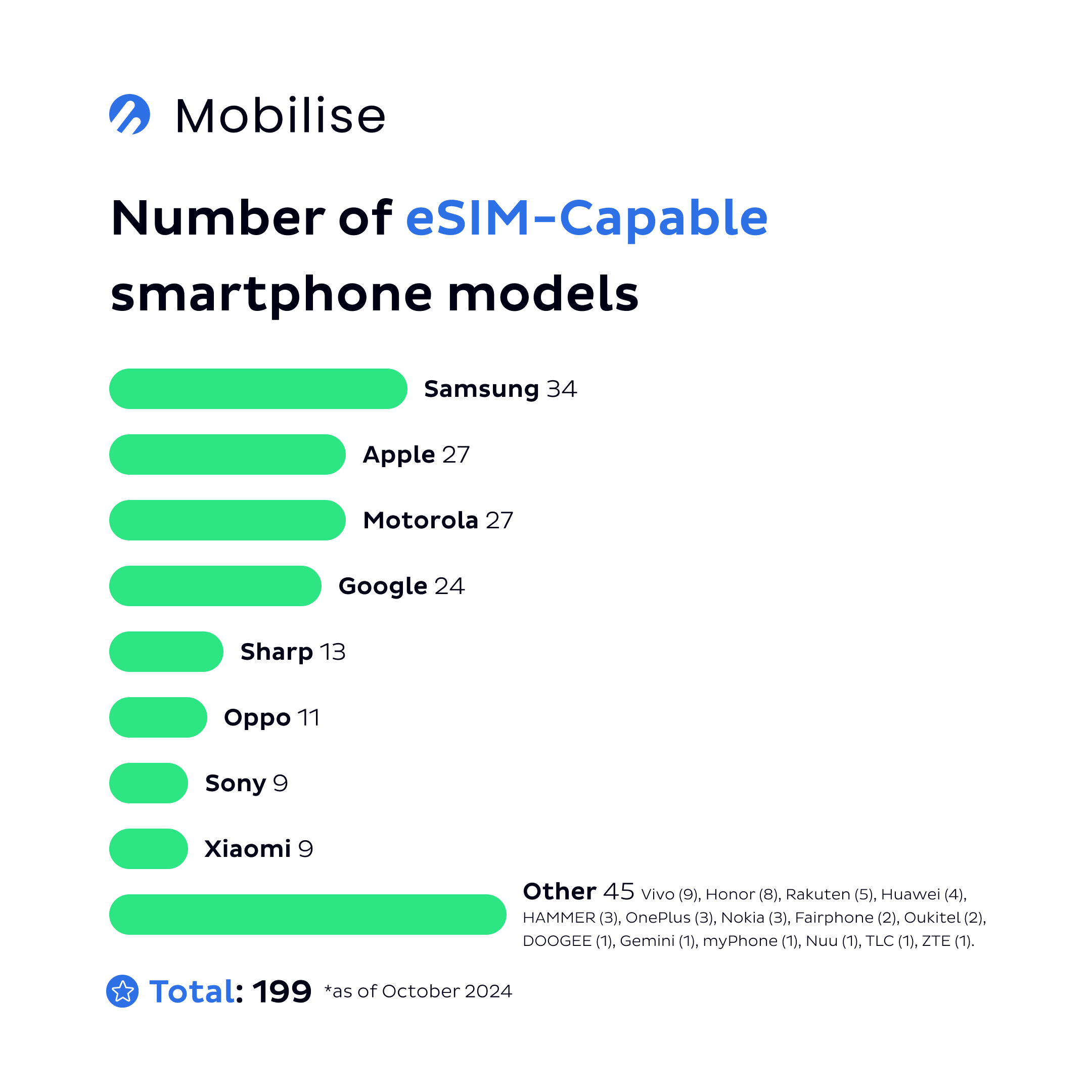
According to Juniper Research, there are 986 million eSIM-capable smartphones in 2023 and the number is predicted to reach 3.5 billion by 2027. The growth is mainly driven by the disruption of Apple’s eSIM-only iPhones. The rise of eSIM-capable smartphone shipments is further accelerated by the rapid release of eSIM-capable devices by other OEMs, such as Samsung, Google and Motorola.
eSIM-capable smartphones are becoming the norm and more accessible to people with all income brackets, and eSIM adoption is primarily driven by consumers. So, we’re here to give you a list of our top picks for the most affordable eSIM-compatible phones in 2024.
Top 5 most affordable eSIM-compatible phones on the market in 2024
5. iPhone SE (£429)
The iPhone SE is Apple’s most affordable smartphone with eSIM capabilities, featuring a pocket-friendly 4.7-inch Retina HD display. With an A13 Bionic chip, 3GB of RAM, and 64GB or 128GB of storage. It also features a 12-megapixel rear camera and a 7-megapixel front-facing camera.
Apple’s SE phone supports 8 or more eSIM profiles and the use of two phone numbers at the same time, both as dual eSIM or nano-SIM and eSIM. However, eSIM capability on iPhone isn’t offered in mainland China, and in Hong Kong and Macao, only some iPhone models feature eSIM support.
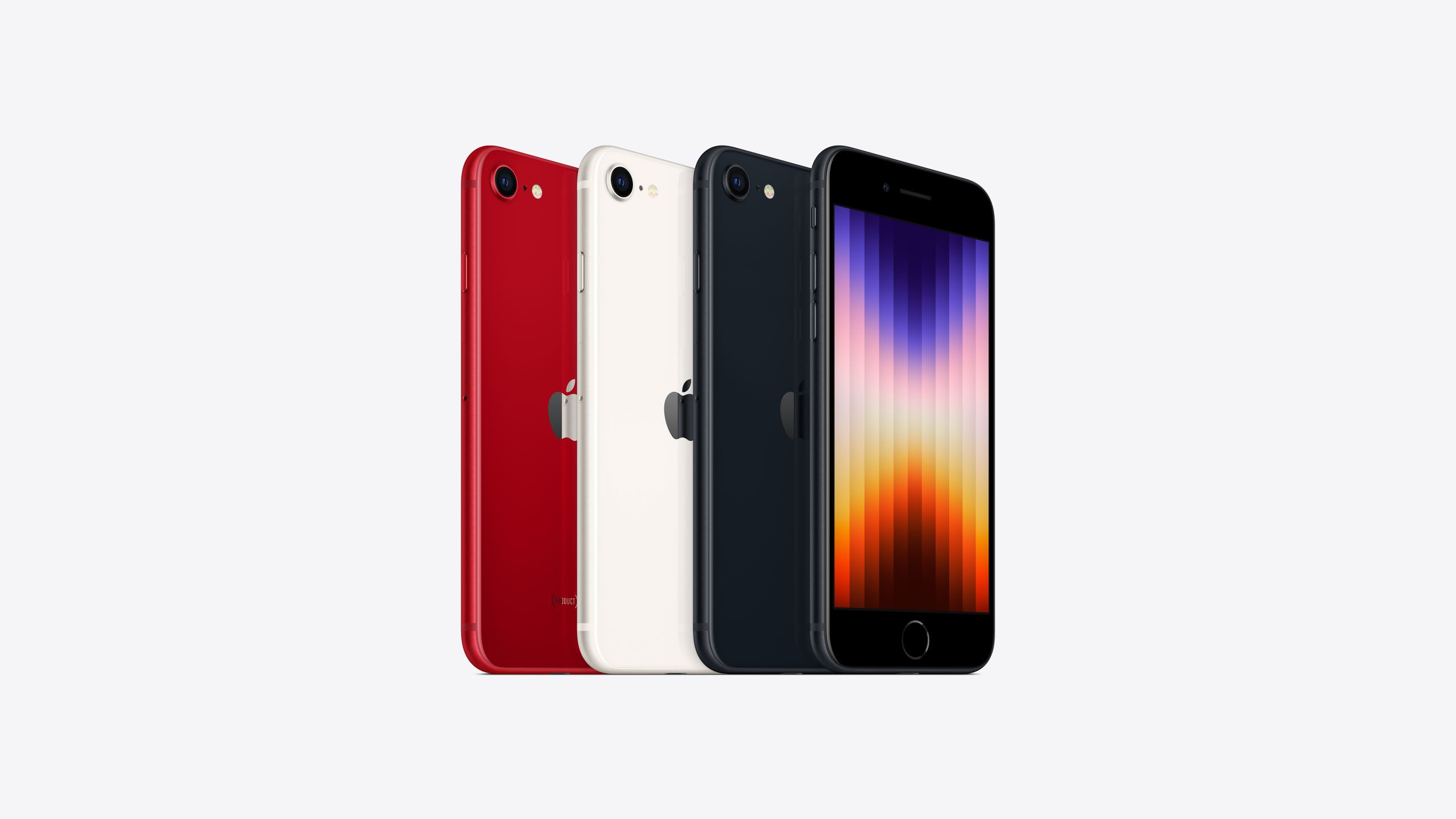 Source: Apple
Source: Apple
4. Fairphone 4 With E/OS (£399)
Running on the open-source “/e/OS” Android operating system for added privacy, Fairphone partnered with Murena to offer a “de-Googled” version of their Fairphone 4 flagship phone. It has a 6.3-inch FHD+ LCD display, a Qualcomm Snapdragon 750G processor with 8GB of RAM and 256GB of storage built-in with an external storage capacity of up to 2TB with a microSD. It also has a 48MP primary camera and ultra-wide camera, and the front camera is 25MP.
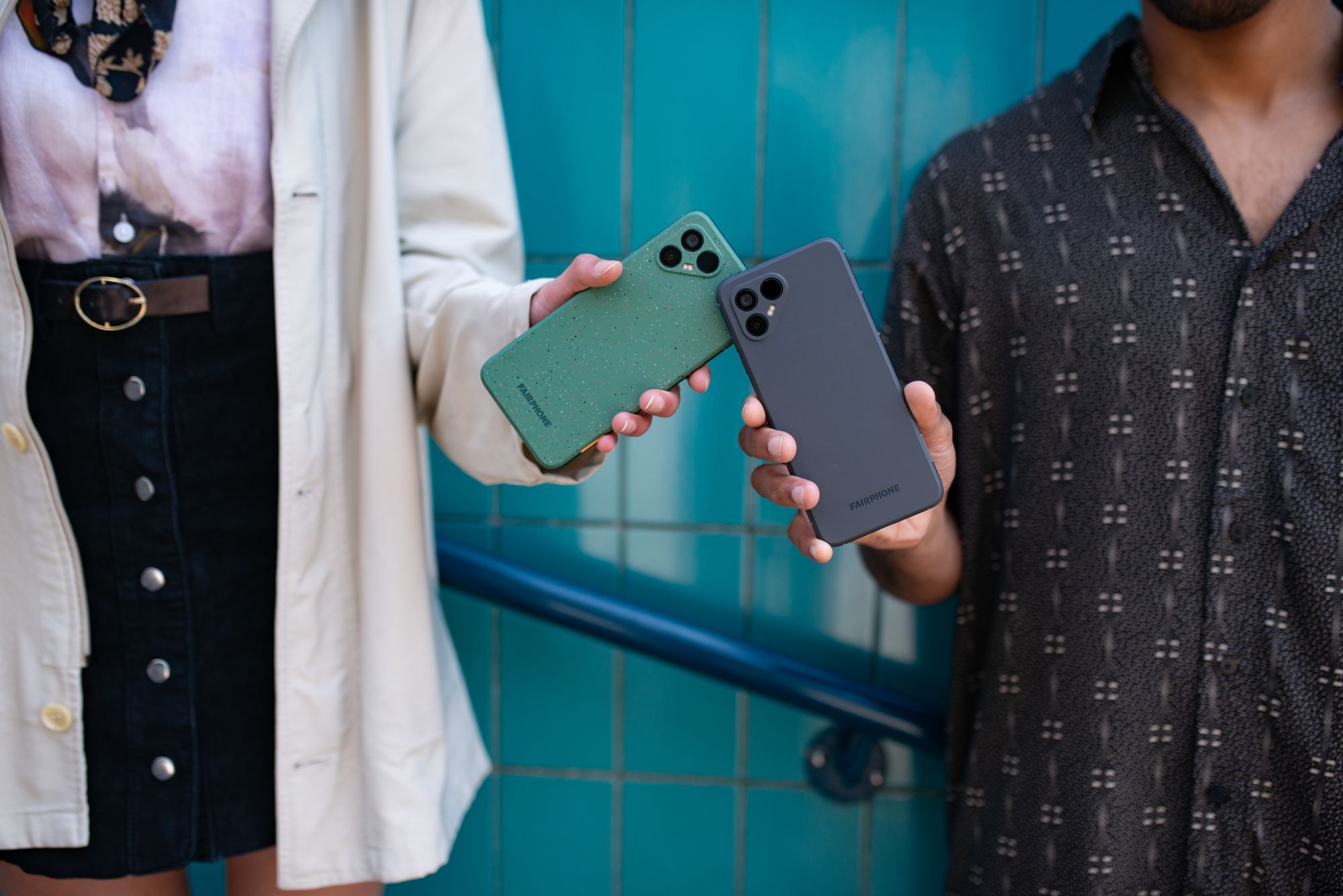 Source: Fairphone
Source: Fairphone
3. Google Pixel 7a (£349)
While not their most recent release, Google’s Pixel 7 is their most affordable eSIM-compatible smartphone, still available on the Google store. It has a 6.1-inch FHD+ OLED display, a Google Tensor G2 processor with 8GB of RAM and 256GB of storage. It has two rear cameras: a 64MP primary camera and a 13MP ultrawide camera, and the front camera is 13MP.
![]() Source: Google
Source: Google
2. Samsung A35 5G (£339)
The A35 phone is Samsung’s most affordable eSIM-supported low-to-mid-range phone, as they’ve previously kept eSIM for their flagship line. It has a 6.6-inch Super AMOLED display, an Exynos 1380 processor, 6GB of RAM, and 128GB or 256GB of storage. It also features three rear cameras: a 50MP primary camera, an 8MP Ultra-Wide camera and 5MP Macro camera, and a 13MP Selfie Camera.
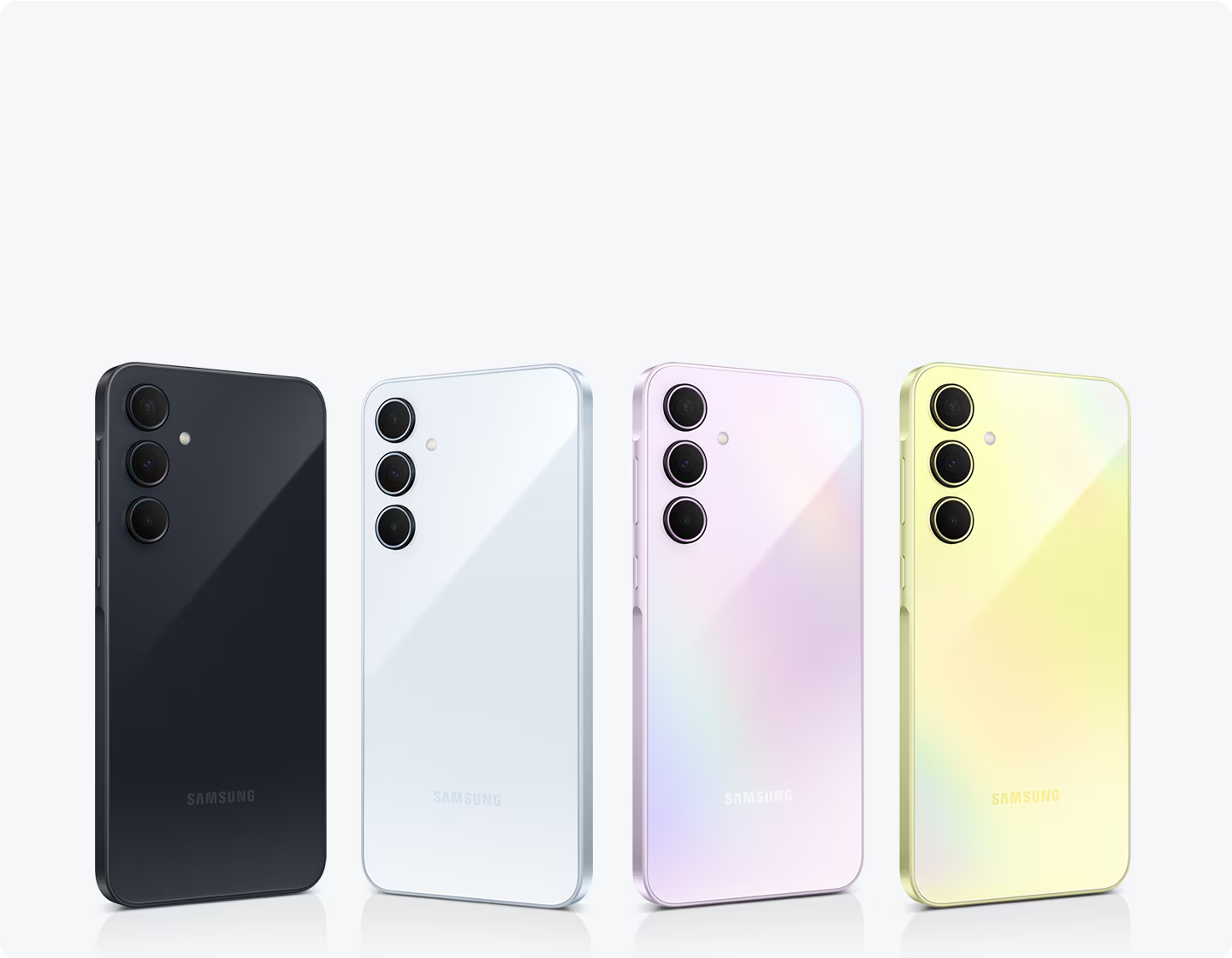 Source: Samsung
Source: Samsung
1. Motorola Moto G55 5G (£199.99)
Designed to give users the best entertainment experience at an affordable price, the Moto G55 5G has a 6.49-inch FHD+ display, the MediaTek Dimensity 7025 processor with 2.5GHz octa-core CPU, with 8GB of RAM and 256GB of storage built-in with an external storage capacity of up to 1TB with a microSD. It also features dual 50MP and 8MP main cameras and a 16MP front camera.
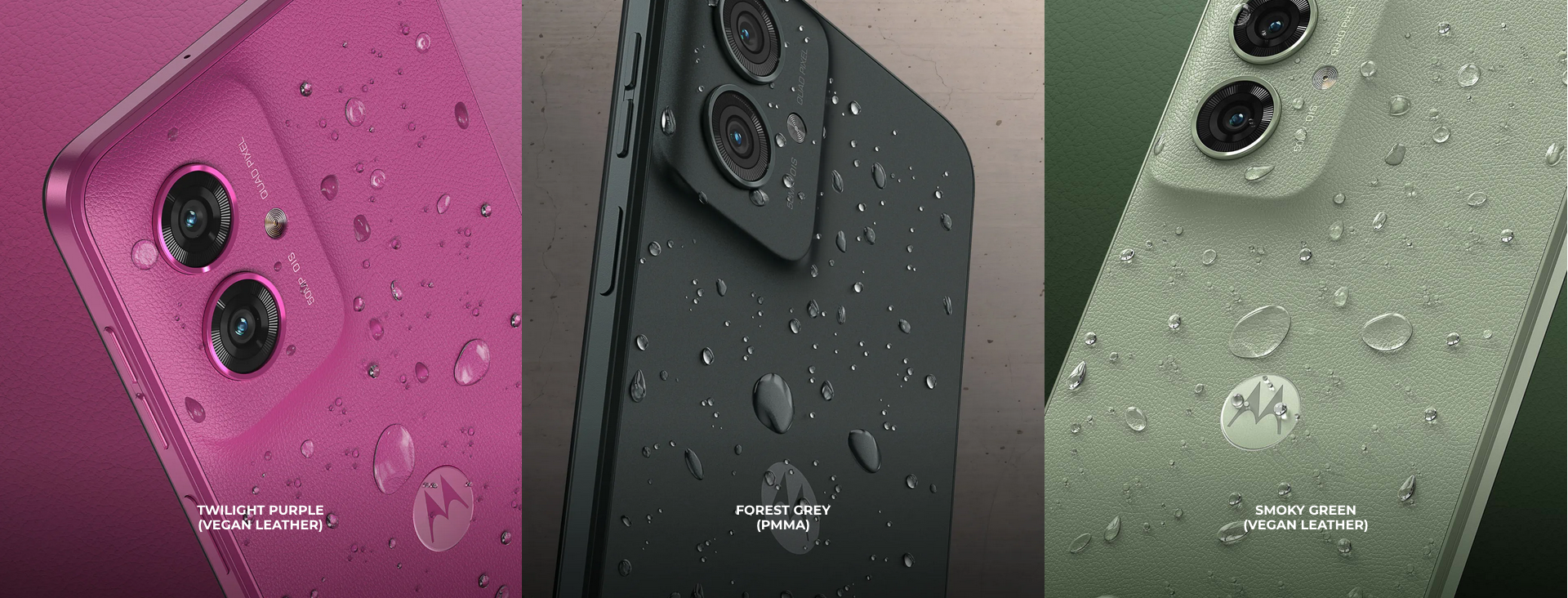 Source: Motorola
Source: Motorola
Analysis of eSIM-Compatible Phones
There’s been a massive uptake in eSIM technology recently. And an increase in options on the market for eSIM-compatible smartphones in 2024. However, the capability is often based on region and carrier/network availability or support. Depending on the manufacturer, eSIM support may only be limited to allowing the integration of only one eSIM profile at a time.
However, eSIM-capability is slowly becoming the norm and is helping to drive consumer adoption, especially with the decrease in the price of eSIM-enabled smartphones driving sales. More specifically, there has been a 50% decrease in the cost of the most affordable eSIM smartphone in 2022 compared to 2024.
In general, the current pricing of eSIM smartphones is a limiting factor in widespread adoption. It’ll only be a matter of time until more OEMs catch up and implement eSIM capability throughout all their smartphone lines.
Another factor limiting adoption is the lack of eSIM plans from SPs, restricting the choices for consumers. Apart from roaming propositions for travellers in the UK, the leading carriers supporting eSIM for consumers are Mobile Network Operators (MNOs) like EE, O2, Vodafone and Three. In the US, there are AT&T, T-Mobile, and Verizon.
They have access to higher budgets, technology, and resources. Mobile Virtual Network Operators (MVNOs), however, will need to move on from the travel industry, where they’ve been focusing the most, to be able to capitalise on the eSIM market.
Conclusion
In October 2022, when we first did our analysis, there were 71 eSIM-enabled smartphones. 6 months later, in March 2023, there are 82 eSIM-enabled smartphones available on the market. As of today, there are 199 eSIM-compatible smartphones available, which is a significant improvement.
Our Top 5 most affordable eSIM-compatible phones on the market in 2023:
- Google Pixel 7 (£599)
- Samsung A54 5G (£449)
- iPhone SE (£449)
- Nokia X30 5G (£399)
- Google Pixel 6a (£399)
While some of the smartphones on our Top 5 list may be repeats from last time, they’ve stood the test of time and still provide great value for their prices.
As consumer interest and knowledge of eSIM continues to grow, so will the demand. It will only be a matter of time before eSIM-compatibility is more widespread and mass adoption skyrockets. SPs, however, and especially MVNOs, will need to play catch up. All to be able to capitalise on eSIM and to ensure they’ll be able to stay in the game without getting left behind.
For MVNOs looking to implement eSIM, Mobilise can help you. We offer eSIM as a Service, which is a digital-first platform that accelerates access to eSIM capabilities. Helping to enable SPs to gain a competitive advantage and diversify their value proposition. All whilst reducing costs, timelines, and project risks.



